Dolly (Book) Review: Japanese Dolls: The Fascinating World of Ningyo by Alan Scott Pate + a Contest!!!!
Earlier this summer, I reviewed a comprehensive guide to antique Japanese dolls by Alan Scott Pate, published originally in 2005. A companion book by the same author was published by Tuttle Publishing. This time around, author Alan Scott Pate concentrated on the art of collecting Japanese dolls, specifically ningyo.
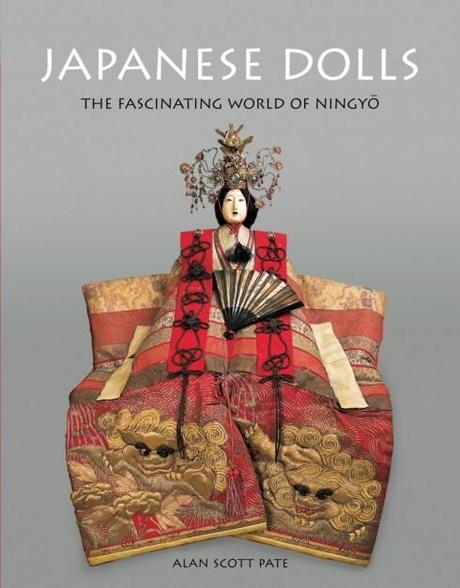
Japanese Dolls: The Fascinating World of Ningyo
“Japanese Dolls: The Fascinating World of Ningyo“ is different from Pate’s past work in many ways. Where his original title was a textbook look at how dolls were intertwined in Japanese culture, this book was written for the beginning collector.

Peek Inside!
Its 260 pages cover a multitude of topics. Part one (pages 10-38), includes chapters on the art of collecting in both Japan and the United States, the first doll shops and collectors, and the introduction of ningyo in Western culture. I found it fascinating to read about the pioneers of Japanese doll collecting: Shimizu Seifu (1851-1913), Nishizawa Senko (1864-1914), and Tsuboi Shogoro (1863-1913).
All born in the Meiji era, which started in 1868 and ran through 1913, they were known in their time as the three great toy collectors. These three took it upon themselves to “preserve, document, and understand better the various ningyo and toy forms which populated the Japanese cultural landscape” by introducing “a systematic approach to collecting ningyo” (pg 26). According to the author, “the concept of collecting these beautiful objects, to intentionally acquire and organize them… for ones appreciation, dates only to modern times and the efforts of the men mentioned above and their peers.” Peers, being those in a society started by Seifu for the appreciation and study of Japanese dolls and toys (Odomo-kai, in English ‘Big Babies Club’) (pg 27). This chapter, also, features some amazing collection photos from the early 1900’s showcasing one of the members of the Odomo-kai, Endo Takeshi. This vast collection features rooms filled with ningyo of all shapes and sizes.
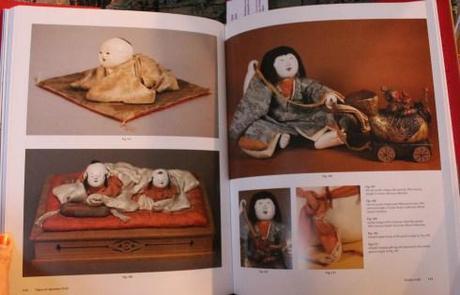
Gosho-Ningyo
Part two (pages 48-249) focus’ on the different categories of ningyo, of which there are many! Pate’s 2005 publication went into great detail about specific dolls. This new book talks about what the characteristics of each type are and a little bit of their history. The type of ningyo’s discussed are: festival dolls (hina-ningyo, musha-ningyo and tableau dolls), display dolls (saga-ningyo, gosh0-ningyo, isho-ningyo and iki-ningyo), wood dolls, clay dolls, mechanical dolls, theatrical dolls and play dolls. While many of the artisans are unknown, this chapter features some fantastic photographs.
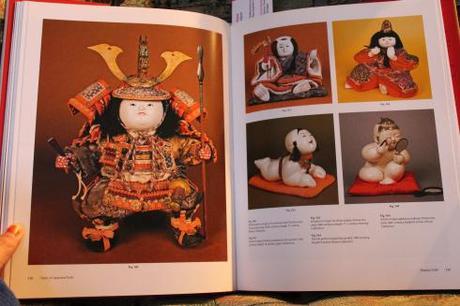
Gosho-Ningyo
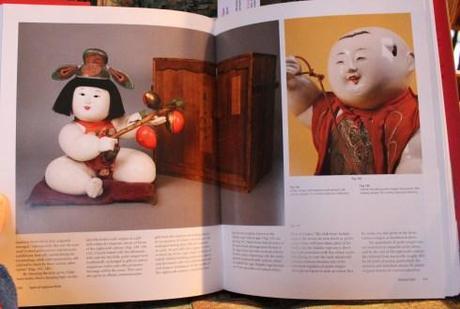
Peek Inside!
As with Pate’s first book, the gosho-ningyo’s captured my heart. Gosho-ningyo’s are known for their big heads and white skin. Made of wood, sometimes completely and sometimes hollow, they have a very childlike look to them. Nishizawa Senko helped popularize this form of ningyo, by collecting all the different regional names for these (there were a lot!) and promoting the idea of using one common name for them- gosho-ningyo’s. Gosho-ningyo’s were originally gifted “within the imperial culture of Kyoto of the eighteenth century” (pg 111). By the end of the eighteenth century, gosho-ningyo’s were “avidly sought after in all levels of society, particularly samurai and merchant classes.” (pg 111).
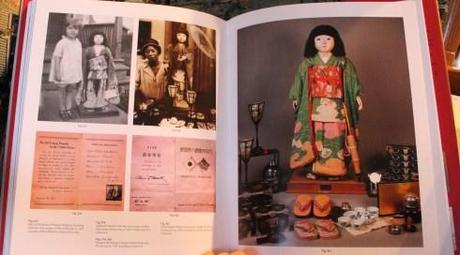
Friendship Doll
The play dolls, ichimatsu-ningyo, are some of my favorites, too. I love their large size and round faces. In 1927, 58 Friendship dolls, also known as ‘dolls of gratitude’ or, in Japanese, torei-ningyo, were created in Japan and sent to the United States as “ambassadors of good will“. Of all the ichimatsu-ningyo shown in this book, the Friendship dolls are my favorite. Can you imagine being one of the recipients of these beautiful dolls in 1927? (These were sent in response to the United States sending 12,000 ‘blue eyed dolls’ to Japanese children through the World Friendship Committee.)
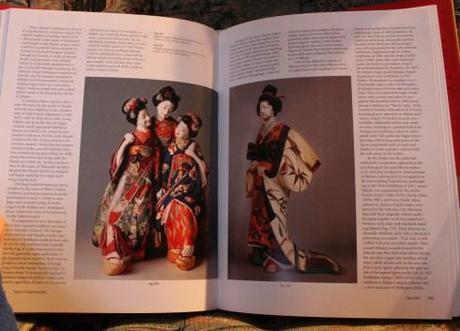
Peek Inside!
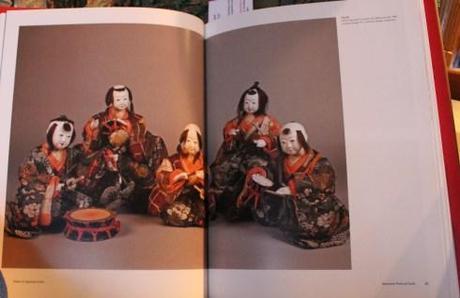
Peek Inside!
Written with a new collector in mind, the information in “Japanese Dolls: The Fascinating World of Ningyo” isn’t too heavy or dense. It is written in a user friendly sort of manner that gives you just enough detail to understand the ningyo’s importance and their place in Japanese society, along with each types unique characteristics.
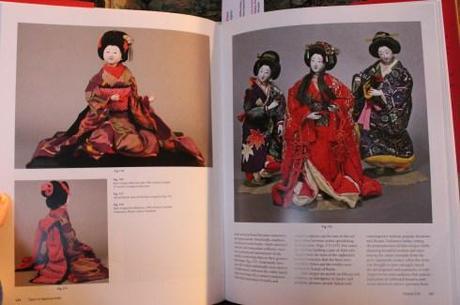
Peek Inside!
Part three (pages 252-257) helps you get a handle on how to start collecting ningyo’s. And, honesty, after seeing all the beautiful photos, how could the thought of adding a ningyo to your collection have not crossed your mind! Pate talks quickly about the proper care and handling of ningyo’s and tips on finding pieces for your collection.
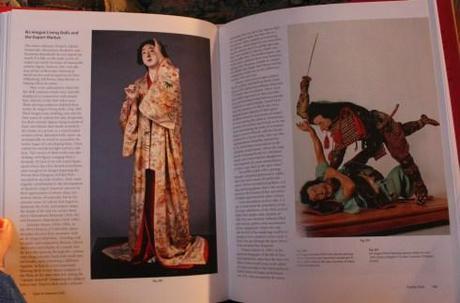
Peek Inside!

Peek Inside!
I thoroughly enjoyed this ‘walking tour’ of sorts on ningyo’s. This doll line is a fascinating one, as the title of Pate’s book states. If you’re looking for an introduction to antique Japanese dolls, this is the book for you. “Japanese Dolls: the Fascinating World of Ningyo” by Alan Scott Pate is sold on Amazon and wherever books are sold.
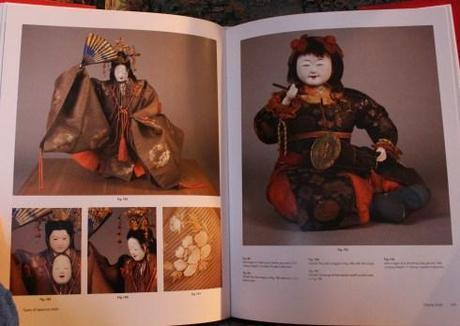
Peek Inside!
Want to win a copy of “Japanese Dolls: the Fascinating World of Ningyo”? Fill out the form below! You have until October 20th to enter. The two winners (yes, two!) will be e-mailed by the publisher. Good luck!
EDIT: The contest is over.
October 2, 2014. Tags: contest, dolly review. Category: Introductions & Reviews, Category: Uncategorized.

